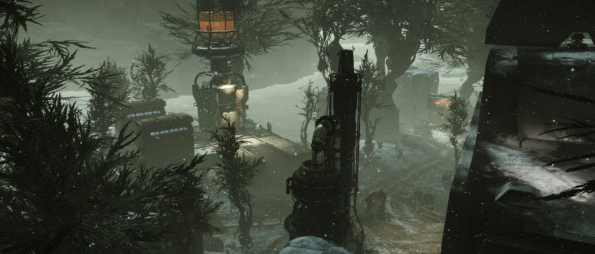Brendan Jacques
Connector Staff
The month of February has been a tumultuous time for video game releases to say the least. This month saw the release of both “The Order: 1886” and “Evolve,” two highly anticipated games each set to be the start of their own franchises and act as the first truly great games of the current console generation. Unfortunately, in the opinions of many consumers, neither game was able to live up to the expectations placed upon them. But what’s interesting about this is that they failed in the eyes of the consumers not because either one was bad, but because they were both far shorter than they should have been.
Game length has always been a touchy subject in games media, with just as many people declaring that they will only play games that will give them an average hours-per-dollar value as there are people who demand quality at any length it may come. Personally, I feel that games should be exactly as long as they should be in order to give the best possible experience to the player. There’s certainly something to be said in favor of games you can sink hundreds of hours into and still find something new to do, but not every game needs to be like that and most shouldn’t be like that. To put it simply, if I was given the choice between an amazing game that’s eight hours long and a good game that’s thirty hours long, then I would more often than not choose the shorter game that I would enjoy more.
Having said that, I do feel that it is completely legitimate for games to be judged as worthy of purchase based on their runtime. Gaming as a whole is an incredibly expensive hobby with a higher barrier of entry than most other forms of media, so it’s completely natural for people to choose longer games over shorter ones in order to get the most bang for their buck out of their purchases. To give an example, I consider “Spec Ops: The Line” to be one of my favorite games of all time, but even if I knew that back then, I probably still wouldn’t have paid full price for an experience that would be complete in a single weekend. And, unfortunately, the majority agreed with me on that front as well when it came to sales. Regardless of whether it’s fair or not, the audience will support whatever can give them the best possible deal, and the majority agrees that, as it stands now, “The Order” and “Evolve” don’t give that deal. However, in my opinion, what developers need to change in order to seem valuable in the eyes of the consumer is not necessarily the amount of content, but rather the price that content is offered at.
To clarify, I’m not suggesting that the standard $60 game price should be completely abolished, but rather that publishers be more lenient with the price based on how much content and staying power the game has to offer. While this initially sounds like it would be a terrible idea since it could mean less of a profit for the developers, it could also lead to increased interest in the discounted product and greater total sales as a result, especially when the game isn’t garnering much attention to begin with. Coming back to my “Spec Ops” example from earlier, customers didn’t give the game the slightest thought when it was first released and was a commercial failure, but bumping the price at launch down to $40 or $50 instead of the usual $60 might have given the title the consumer interest that it so desperately needed and may save the similarly-lengthened “The Order” from the same fate.
Re-thinking the standard price for AAA games may also change the public’s current reaction to day-one DLC and micro-transactions. Since their introduction in the height of the App Store era, micro-transactions have been considered a cancer of modern game design because of their insistence on bullying the player into paying more for content they already have access to. Many people consider day-one DLC (downloadable content available at the same time as the main game) to be just as bad because it seems like the developer is purposefully cutting content from the main game to sell separately for even more money. The most recent example of this is “Evolve,” which launched with about $135-worth of DLC available alongside the main game, which many critics justifiably criticized the game for. With this in mind, I would bet that “Evolve” would also benefit from a small price drop at launch not only to bring more attention to a new IP that needs it, but also as a sign of good faith to consumers, who would in turn be more lenient and accepting of their DLC practices.
While the idea of an ever-flexible core price for video games may seem a little far-fetched at first, it’s not like it’s a new idea at all. As a result of the so-called “App Store Era” as well as the growing prevalence of indie games, game prices have been more lenient and prone to experimentation than they ever have been in the past. I sincerely doubt we would even be having this discussion without the flood of smaller but equally enjoyable games that have flooded the market in the past several years, and publishers owe it to themselves to consider that changing market when selling their product. I know that a move such as decreasing game price at launch is incredibly risky and might not seem like a path worth taking. Heck, it’s a concept so rarely explored in AAA gaming that there’s very little concrete evidence to support it. But, as I said earlier, the audience will support whatever they feel gives them the best deal, and having that audience support can go a long way.


Pingback: Wii VIRTUAL CONSOLE FAILED Mii?